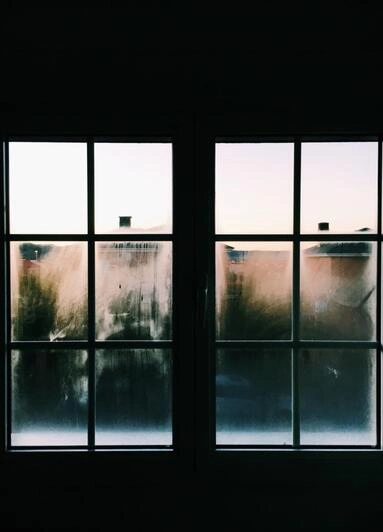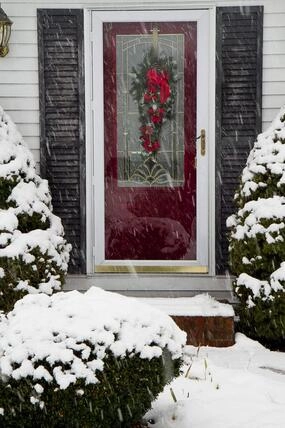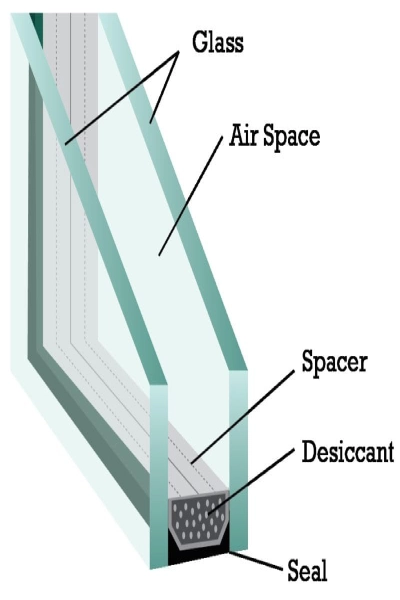When the weather starts to cool down, you don’t want to worry about drafts and cold air coming through windows and doors. Thankfully, we offer tips below on how to block cold air from coming through windows and properly cover those drafty spots in your home.

Read on to learn about seven ways to insulate windows or doors and what you can do for a more permanent, safer solution:
- Use weather strips
- Install new door sweeps
- Apply foam tape
- Insulate with window film
- Hang insulated curtains
- Recaulk windows and doors
- Use a door snake
1. Use Weather Strips
Weather strips are an inexpensive way to seal doors and keep cold air from coming in through windows. There are three main types: compression, V-type, and foam.
Compression weather strips are the most durable for seal-swinging doors and window sashes. V-type weather strips, meanwhile, fit against the side of a door or window jam and form a seal to prevent cold air from coming through.
Lastly, foam weather stripping comes in various sizes with an adhesive backing on one side. While foam weather stripping is the easiest to install, it needs to be replaced every one to three years.
2. Install New Door Sweeps
Installing a door sweep along the bottom of an exterior door can stop cold air from coming through.
To ensure a good fit, measure the length of the door when it’s closed and cut the sweep to the size you need.
There are a variety of door sweeps, including heavy-duty, drip-cap, and brush styles. Contact a glass and window expert to determine which would be best for your home.
3. Apply Foam Tape
Adhesive foam tape is a great weather-proofing alternative for doors and windows letting cold air in.
A good rule of thumb is to cut the tape to size and secure it along areas that have a draft.
4. Insulate with Window Film
Window film looks like the plastic wrap you use to cover food and does a great job at blocking cold air from coming through windows during the colder months.
After placing window film on your windows, heat it with a blow-dryer to shrink it and seal out drafts.

5. Hang Insulated Curtains
Thermal curtains are another way to stop cold air coming through windows. If you keep them closed, they help your home retain heat in the colder months.
6. Recaulk Windows and Doors
Apply new caulk to old spots along your windows and doors to help seal out drafts. If you won’t open any windows until spring, temporarily seal them shut with caulking and peel it off when the weather starts to get warmer.
7. Use a Door Snake
These weighted fabric tubes are placed at the bottom of your door and prevent cold air from coming through. If you don’t want to buy a door snake, a rolled-up towel will also do the trick.
While these are easy, temporary ways to prevent drafts and keep cold air from coming through windows, consider more permanent solutions, such as installing double-pane windows.
Single vs. Double-Pane Windows

Double-pane windows, or insulated glass units (IGUs), have air pockets between their panes to diffuse heat transfer and reduce window conductivity.
They are not only great for insulating your home, but they also lower noise pollution and reduce energy costs.
Single-pane units do not have air pockets, allowing cold air to come through windows more easily.
Insulate Your Windows with Glass Doctor
At Glass Doctor, we have years of experience installing double-pane windows and keeping cold air out of customers’ homes.
If you want to permanently keep cold air from coming through your windows, install double-pane windows with Glass Doctor. Schedule an appointment today or call us!
More to Know About Keeping Cold Air Out of Your Home
Cold drafts sneaking through your windows and doors can make your home uncomfortable and increase energy costs. Fortunately, there are simple DIY fixes and long-term solutions that can help seal those leaks and keep your home warm. Below, find common troubleshooting tips and practical advice to block cold air and improve your home’s comfort all winter long.
Troubleshooting
Why does cold air come through my windows even when closed?
Cold air usually sneaks in through cracks, worn weather stripping, or poor insulation around the frame. Even single-pane glass can allow drafts to pass through.
How do I know if my windows need replacing to stop cold air?
If you notice condensation between panes, visible gaps, or ongoing drafts after sealing, it may be time for professional replacement windows. Glass Doctor is available to help troubleshoot.
Is it normal for some cold air to come through windows?
A small amount of air leakage is normal, especially in older homes. However, if drafts are noticeable, it’s a sign that the window needs sealing or replacement. Learn more about window replacements from Glass Doctor.
DIY & Short-Term Solutions
What is the best way to block cold air from coming through windows in colder months?
The best long-term fix is upgrading to double-pane or energy-efficient windows. For a quick DIY option, any of the options we’ve outlined above can be effective for the short term.
How do I stop cold drafts from coming through old windows?
Old windows often need new caulk or weather stripping. If they’re very drafty, you may need storm windows or complete window replacements to prevent these drafts.

